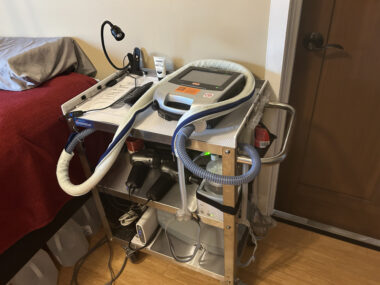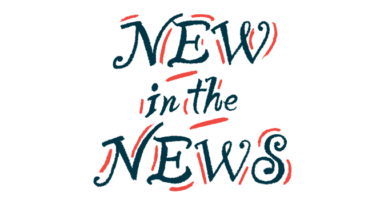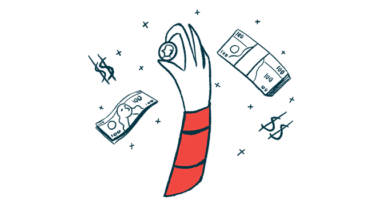A well-oiled machine with training and checklists for ALS caregivers
Managing my husband's disease means always improving his nighttime care

“You really have everything figured out,” one of my husband Todd’s new caregivers said as I was helping her transfer him into bed using his overhead lift.
We’ve been managing ALS and paralysis for a long time, and we continue to improve our processes for Todd’s nighttime care. Sometimes we surprise ourselves by figuring out better ways of doing things after years of doing it another way.
We have good equipment and a long list of steps for his caregivers to utilize each night at the beginning and end of each shift. When our new hires first join Todd’s care team, they shadow experienced caregivers for a couple hours so they can see the routine to clean him up, transfer him into bed, and get him positioned with pillows. When they work their first solo shifts, I check in on them until they are comfortable working on their own.
Our most recent hire has done home care for years and worked in care facilities before that. She was impressed with our overhead lifts in Todd’s bathroom and bedroom, the cart we have for his noninvasive ventilator, and the printed list of procedures for her to reference.
The checklist includes tasks for the beginning of each shift: Fill the humidifier tank for the ventilator, replace the batteries in the overhead lifts, rinse the nasal pillows, floss and brush Todd’s teeth, clean him up with no-rinse soap, transfer him into bed. The end-of-shift list includes turning Todd onto his back and positioning pillows and swapping his Resmed P10 ventilator mask for the P30i, which he prefers when he’s on his back.
Solving problems
Over the years, we’ve modified our procedures and equipment. A few months ago, we purchased a stainless steel three-shelf utility cart to hold Todd’s noninvasive ventilator, humidifier, and cough assist machine, and we wheel it between his office and bedroom for daytime and nighttime use. Once, after the humidifier tipped over for the third or fourth time, Todd thought to use Velcro it secure it to the leg of the cart. Problem solved.

A set of shelves holds Todd Neva’s noninvasive ventilator, humidifier, and cough assist machine. The shelf is moved from his office to his bedroom for daytime and nighttime use. (Courtesy of Kristin Neva)
Todd has a P10 mask he uses during the day and, after about a month, the elastic band stretches out such that it’s uncomfortable against his nostrils. It took about two years for him to figure out that that stretched-out band was comfortable at night and he could use it for another month while he breaks in a new elastic band during the day.
At the beginning of each shift, he would have the caregivers rinse the nasal pillows for his night mask and then they would need to flick the water out of the pillows, otherwise Todd would have water sprayed into his nose. About a month ago, he realized he could have them rinse the nasal pillows after he’s finished using them and then hang the mask to drip-dry during the day so they’ll be ready for the next night.
There are times — at least when we have experienced caregivers and Todd isn’t sick — when his care routine feels like we’re running a well-oiled machine.
The other night, I was helping a caregiver with Todd’s transfer into bed and his initial positioning. We rolled Todd to his side, and I placed two foam wedge pillows behind his back. As the caregiver started to place a piece of foam on the side of his body to help position his arm, Todd instructed her, “Before you do that, put more pillows behind my back.”
From the foot of the bed, I tossed two pillows and, while they were traveling through the air, the caregiver slid the foam under his upper arm and pushed his elbow and wrist back onto the pillows just as they landed perfectly behind Todd.
She and I laughed.
Note: ALS News Today is strictly a news and information website about the disease. It does not provide medical advice, diagnosis, or treatment. This content is not intended to be a substitute for professional medical advice, diagnosis, or treatment. Always seek the advice of your physician or other qualified health provider with any questions you may have regarding a medical condition. Never disregard professional medical advice or delay in seeking it because of something you have read on this website. The opinions expressed in this column are not those of ALS News Today or its parent company, Bionews, and are intended to spark discussion about issues pertaining to ALS.








Leave a comment
Fill in the required fields to post. Your email address will not be published.